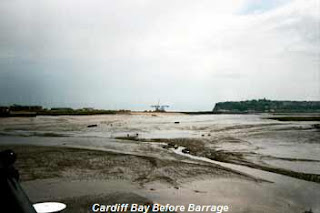 |
| Cardiff City Hall |
Cardiff City: Capital of Wales
In it's history Cardiff has been the foremost centre for the exportation of coal in the world. This may give the impression of a dirty coal-mining town, but on the contrary, Cardiff is a very attractive city to the visitor. It is an under-statement to say the architecture is very eye-catching, with it's Norman Castle and Edwardian civic centre, surrounded by flowering trees and ornate flower beds.
Cardiff Castle
The history of Cardiff Castle goes back to the eleventh century. It was built on the site of a derelict Roman fort and many non-Welsh people settled there. This brought about many attacks from the surrounding villages of the native Welsh. In 1158, Lord Ifor ap Meurig, of Sengenydd (near Caerphilly), the Norman Lord of Glamorgan, together with his Countess, lived in Cardiff Castle and was kidnapped from the castle and held for ransom for certain 'wrongs' he had inflicted on the natives.
 |
| Cardiff Castle |
Cardiff Castle looks like a fairy-tale creation, that could well grace the pages of the book, Sleeping Beauty. There are guided tours around the castle, and it is full of medieval and ornate decoration, that includes...
The 'Chaucer Room', based on Chaucer's works; the richly decorated Arab room; the Summer Smoking Rooms decorated with emblems of the universe, to name but a few. Peacocks inhabit the grounds and screech-like calls can be frequently heard. It is obvious that money was no object to the Marquis of Bute. Cardiff Castle is a magnificent place to visit, if Castles are your forte.
Shopping in Cardiff
Cardiff shopping centre is a mixture of the modern with the old. Modern shopping malls sit alongside Victorian Arcades, with the newer St. David's centre at the heart of the city that in Christmas 2009 became even larger. Adjacent to the centre is St. David's Hall. Here, we find a variety of entertainment all the year round, from singing stars like Shirley Bassey and Tom Jones to famous comedians, orchestras and opera stars.
Other attractions in Cardiff are the National Museum of Wales, with it's fine artifacts of Welsh history and other collections and also, about five miles to the West of the City, St. Fagan's Folk museum.
Cardiff (Tiger) Bay.
Dangerous or not, Tiger Bay has produced one of the world's most famous singing stars, Shirley Bassey, who to this day often appears for a live performance in Cardiff's St. David's Hall.
 |
| Tiger Bay, Keyside |
In 1987, Cardiff Bay Development Corporation was created in order to turn the area into place of attraction for the the people of Cardiff and tourists with an attraction called, Techniquest for teaching kids about... well technical stuff. There were other leisure pursuits, arts and crafts, the Wales Millennium Centre and more.
Cardiff Bay Quayside
 |
| Cardiff Bay Before Barrage |
No comments:
Post a Comment